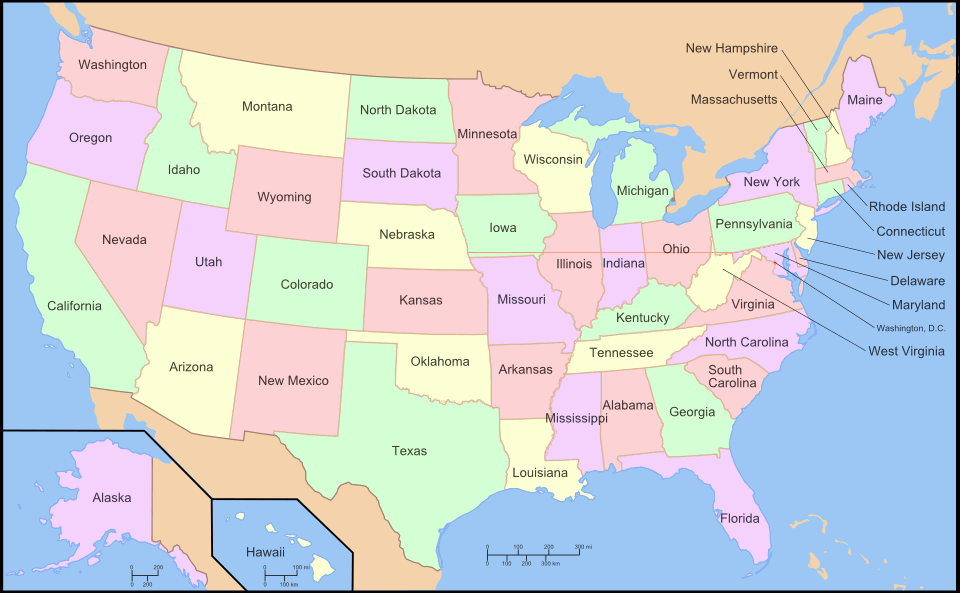Child Molestation Laws: State-by-State
Each year, approximately 1.3 million children are sexually assaulted. 20% of girls and 5% of boys have suffered at the hands of sexual predators. In response to this shocking epidemic, both state and federal laws have been enacted to protect children from dangerous sexual offenders.
Estey & Bomberger, LLP created this state-by-state guide to child molestation laws for informational purposes only. It is important to understand that the laws on child molestation and child sexual abuse vary widely from state to state, and consulting with a child sexual assault lawyer for victims is the best way to understand these often complicated laws. If you are a survivor of childhood sexual abuse, you should contact a lawyer right away to discuss your rights.
Child Sexual Abuse Laws in the United States

- Alabama
- Alaska
- Arizona
- Arkansas
- California
- Colorado
- Connecticut
- Delaware
- Florida
- Georgia
- Hawaii
- Idaho
- Illinois
- Indiana
- Iowa
- Kansas
- Kentucky
- Louisiana
- Maine
- Maryland
- Massachusetts
- Michigan
- Minnesota
- Mississippi
- Missouri
- Montana
- Nebraska
- Nevada
- New Hampshire
- New Jersey
- New Mexico
- New York
- North Carolina
- North Dakota
- Ohio
- Oklahoma
- Oregon
- Pennsylvania
- Rhode Island
- South Carolina
- South Dakota
- Tennessee
- Texas
- Utah
- Vermont
- Virginia
- Washington
- Washington, D.C.
- West Virginia
- Wisconsin
- Wyoming
Child Safety Laws
Adam Walsh Child Protection and Safety Act
The Adam Walsh Child Protection and Safety Act was signed into law by President George W. Bush in 2006. Congress drafted the law after a Florida boy, Adam Walsh, was abducted from a shopping mall and later found murdered. Among other things, the Act established a national sex offender registry, overhauled abuse laws, implemented statutory minimum and maximum sentences, and eliminated statutes of limitations for sex crimes against children. The Act also established a civil commitment procedure for federal sex offenders.
Jessica’s Law
Jessica’s Law evolved after a young girl, Jessica Lunsford, was kidnapped, raped, and murdered by a previously convicted sex offender in 2005. This Florida law, which mandates a minimum sentence of 25 years for first-time sex offenders who target children under the age of 12 and life sentences for repeat offenders, has been replicated in more than 40 other states. Jessica’s Law also requires some sex offenders to wear GPS tracking devices for life. The Jessica Lunsford Act was proposed as a federal law to Congress, but was not ultimately enacted.
Megan’s Law
Megan’s Law was enacted after Megan Kanka, at the age of seven, was raped and killed by a sex offender who lived in her New Jersey neighborhood. Her killer had been previously convicted of sex crimes twice, but no one in the neighborhood knew of his past. The New Jersey legislature reacted to the crime by requiring sex offenders to register with a statewide database and mandating community notification of the presence of sex offenders. Similar laws (also referred to as “Megan’s Law”) have been enacted in most states. In 1994, a federal version of the law (known as the Jacob Wetterling Act) was enacted.
California residents can visit www.meganslaw.ca.gov to search for registered sex offenders in their area. The site also provides information about sex offenders such as their names, addresses, and the crimes they committed.
Chelsea’s Law
Chelsea’s Law was signed into law by California Governor Arnold Schwarzenegger in 2010. This law takes its name from San Diego teen Chelsea King, who was killed by a recently-released sex offender after setting out for a jog in a local park. This law mandates that certain violent sex offenders must receive a life sentence without the possibility of parole. This law does not apply to low-level sex offenders.
Child Abuse Prevention and Treatment Act
The primary federal legislation addressing child abuse and neglect is the Child Abuse Prevention and Treatment Act (CAPTA), originally enacted in 1974. The Act provides federal funding to states that supports prevention, assessment, investigation, prosecution, and treatment activities. CAPTA also provides grants to public agencies and nonprofit organizations.
Nationwide Child Molestation Lawyers
If your child has suffered abuse at the hands of a sexual predator, contact the experienced child molestation victim lawyers at Estey & Bomberger, LLP for a free and confidential consultation. Our attorneys have obtained precedent-setting verdicts and multi million-dollar settlements against child molesters, including a sex abuse case with a $30 million verdict in 2010 in Santa Clara County.

